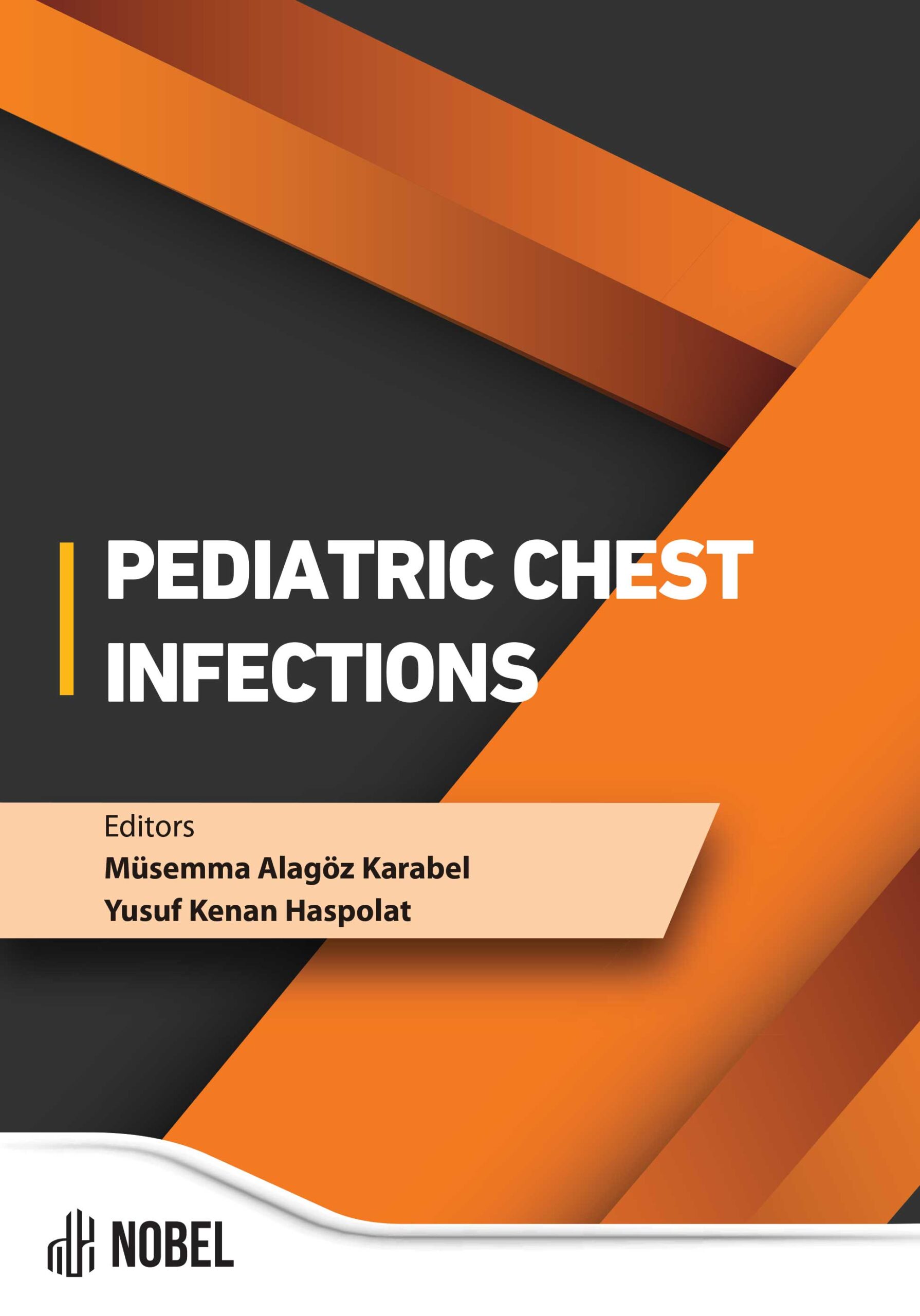The Surgical Procedures in Pulmoner Cystic Hydatic in Children
Erol Basuguy (Author), Serkan Arslan (Author)
Release Date: 2024-06-19
This text explains the importance of the concept of "Being Me" in the family and what needs to be done about it. "Being me" is possible when the individual knows himself, is spiritually strong, determines his priorities, knows and fulfills his limits and responsibilities, and is also aware of the psychological wounds he has experienced [...]
Media Type
Buy from
Price may vary by retailers
| Work Type | Book Chapter |
|---|---|
| Published in | Pediatric Chest Infection |
| First Page | 47 |
| Last Page | 53 |
| DOI | https://doi.org/10.69860/nobel.9786053359463.5 |
| Page Count | 7 |
| Copyright Holder | Nobel Tıp Kitabevleri |
| License | https://nobelpub.com/publish-with-us/copyright-and-licensing |
Erol Basuguy (Author)
Associate Professor, Dicle University
https://orcid.org/0000-0001-7934-4452
3Associate Professor Erol Basuguy graduated from Dicle University Faculty of Medicine in 1997. She received training as a pediatric surgery specialist at Dicle University Faculty of Medicine between 1999 and 2004. In 2014, she started working as an assistant professor at Dicle University Faculty of Medicine. She has numerous articles and papers published in various national and international journals and has given many oral presentations at various congresses
Serkan Arslan (Author)
Associate Professor, Dicle University
https://orcid.org/0000-0002-3456-9217
3He graduated from Erciyes University Faculty of Medicine in 2004. He completed my specialty training in Pediatric Surgery at Erciyes University Faculty of Medicine in the same place. Later, he worked as a specialist physician and administrator at Kastamonu Dr. Münif Islamoğlu State Hospital between 2011 and 2012. After completing my compulsory service, he started Dicle University Faculty of Medicine as an Assistant Professor in August 2013. Between October 2015 and March 2016, he received 6 months of training as an observer in the field of Pediatric Thoracic Surgery at Ege University Faculty of Medicine. he received the title of Associate Professor on June 21, 2019. he have approximately 80 articles and many papers in national and international fields and my H index is 13. In addition, he have book editorships and chapter authorships. He is currently working in academic staff at Dicle University Faculty of Medicine.
Adalet Elçin Yıldız, Altan Güneş, Doğuş Güney, Can İhsan Öztorun, Nazlı Gülsüm Akyel, Emrah Şenel. Lung Hydatid Cysts in Children: Imaging Findings of Complicated and Non-Complicated Lesions. Türkiye Çocuk Hast Derg/Turkish J Pediatr Dis / 2019; 3: 142-148
Approach to Pulmonary Hydatid Cyst in Childhood. Miray Yılmaz1, A. Feridun Işık, Editör: Doç. Dr. İrfan Yalçınkaya, TÜSAD Eğitim Kitapları Serisi. 2016 TÜSAD | Türkiye Solunum Araştırmaları Derneği.
Armoon A, Mehrian P, Soleimantabar H, Torabi S, Ghahderijani BH. Computer Tomography (CT) Characteristics of Pulmonary Cystic Echinococcosis. Med Arch. 2019 Oct;73(5):338-343.
Arslan S, Turan C, Sezer S, Tuna IS. Primary lumbar hydatid cyst: a case report. Turk J Pediatr. 2010 Sep-Oct;52(5):556-8. PubMed PMID: 21434547.
Ciobotaru MD, Luca M, Cobzaru RG. Surgical management of pulmonary hydatidosis in children. Rev Med Chir Soc Med Nat Iasi. 2014 Jul-Sep;118(3):753-8. PMID: 25341297.
Divarcı E, Arslan S, Dökümcü Z, Kantar M, Demirağ B, Öniz H, Ertan Y, Alper H, Erdener A, Özcan C. Radiological nodule behavior: A critical parameter in thesurgical management of pediatric pulmonary metastases. Turk J Pediatr.2018;60(4):372-379
Dokumcu Z, Arslan S, Divarci E, Erdener A, Ozcan C. Thoracoscopic Treatment of Pulmonary Hydatid Cysts May Have a High Morbidity Risk in Children: Retrospective Analysis. Eurasian J Med. 2017 Oct;49(3):172-177.
Legonkov YA, Bronshtein AM. [(Experıence wıth albendazole treatment ın chıldren wıth cystıc echınococcosıs)]. Med Parazitol (Mosk). 2017 Apr;(2):9-13. Russian.
Lone YA, Singh S, Tyagi S, Naaz A, Tiwari BK. Clinical Pattern of Pediatric Hydatid Disease. J Indian Assoc Pediatr Surg. 2024 Mar-Apr;29(2):122-128.
Mahmut Güzel, Mustafa Küçükaydın, Mehmet Uysal, Serkan Arslan, Ahmet Burak Doğan. Çocuklarda Karaciğer Kist Hidatikleri İçin Laparaskopik Cerrahi. Erciyes Tıp Dergisi (Erciyes Medical Journal) 2011;33(2):153-156
Odev K, Guler I, Altinok T, Pekcan S, Batur A, Ozbiner H. Cystic and cavitary lung lesions in children: radiologic findings with pathologic correlation. J Clin Imaging Sci. 2013
S Arslan, MH Okur, E Basuguy, B Aydogdu, E Karaduman, M Azizoğlu, SMO Otcu, M Karabel, S Bilici. Analysis of mortality risk factors for newborns with Bochdalek diaphragmatic hernia – a 10-year single-centre experience. South African Journal of Surgery 2022;60(3)
| onix_3.0::thoth | Thoth ONIX 3.0 |
|---|---|
| onix_3.0::project_muse | Project MUSE ONIX 3.0 |
| onix_3.0::oapen | OAPEN ONIX 3.0 |
| onix_3.0::jstor | JSTOR ONIX 3.0 |
| onix_3.0::google_books | Google Books ONIX 3.0 |
| onix_3.0::overdrive | OverDrive ONIX 3.0 |
| onix_2.1::ebsco_host | EBSCO Host ONIX 2.1 |
| csv::thoth | Thoth CSV |
| json::thoth | Thoth JSON |
| kbart::oclc | OCLC KBART |
| bibtex::thoth | Thoth BibTeX |
| doideposit::crossref | CrossRef DOI deposit |
| onix_2.1::proquest_ebrary | ProQuest Ebrary ONIX 2.1 |
| marc21record::thoth | Thoth MARC 21 Record |
| marc21markup::thoth | Thoth MARC 21 Markup |
| marc21xml::thoth | Thoth MARC 21 XML |

